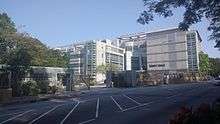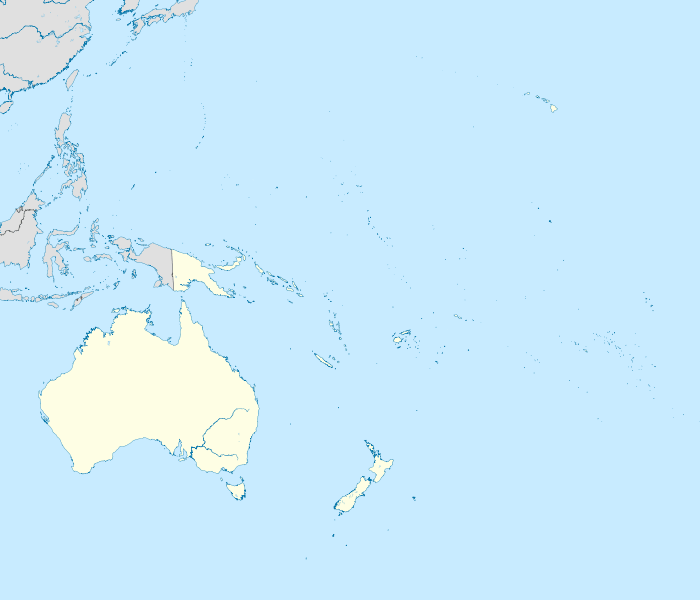Nihonjin gakkō
Nihonjin gakkō (日本人学校, lit. School for Japanese people), also called Japanese school, is a full-day school outside Japan intended primarily for Japanese citizens living abroad. It is an expatriate school designed for children whose parents are working on diplomatic, business, or education missions overseas and have plans to repatriate to Japan.
The schools offer exactly the same curriculum used in public elementary and junior high schools in Japan, so when the students go back to Japan, they will not fall behind in the class. Some schools accept Japanese citizens only; others welcome Japanese speaking students regardless of citizenship.
They are accredited by Japan's Ministry of education and science and receive funding from the Japanese government. There were 85 schools worldwide as of April 2006,[3] and all of these schools provide English classes in the primary education.
Every school hires teachers from Japan on a two- to three-year assignment, but they also hire people from the local community as Japanese-speaking teachers, English and other language instructors, administrative assistants, gardeners, janitors and security guards.
Nihonjin gakkō serve elementary school and junior high school.[4] One nihonjin gakkō, Shanghai Japanese School, has a senior high school program.[5]
Schools that partially offer the nihonjin gakkō's curriculum after school hours or on weekends are sometimes called Japanese Schools, too, but strictly speaking they are categorized as hoshū jugyō kō or hoshūkō, a supplementary school.
History
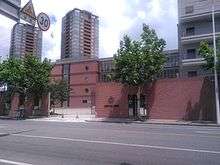
Some of the nihonjin gakkō in Asia have a long history, originally established as public schools in the Japan-occupied territories in Thailand, Philippines, and Taiwan.
As Japan recovered after World War II, increased numbers of Japanese international schools serving elementary and junior high school levels opened around the world.[6] The first postwar Japanese overseas school was the Japanese School of Bangkok, which opened in 1956.[7]
The Ministry of Education of Japan, as of 1985, encouraged the development of nihonjin gakkō, in developing countries, while it encouraged the opening of hoshū jugyō kō, or part-time supplementary schools, in developed countries. However, some Japanese parents in developed countries, in addition to those in developing countries, campaigned for the opening of nihonjin gakkō in developed countries due to concern about the education of their children.[8]
In 1971, there were 22 nihonjin gakkō worldwide.[8] During the postwar rapid economic growth in 1950s to early 1970s and Japanese asset price bubble in 1980s, the country gained economic power and many sogo shoshas and major industries sent their employees all over the world. That was when many nihonjin gakko were established to educate their children in Asia, Europe, Middle East, North, Central and South America. The number of nihonjin gakkō increased to 80 in 1986 with the opening of Japanese schools in Barcelona and Melbourne. As of May of that year 968 teachers originating in Japan were teaching at these Japanese schools worldwide. That month 15,811 students were enrolled in those schools.[9] The number of nihonjin gakkō increased to 82 by 1987.[8]
In the early 1980s, 40% of Japanese national children living in Europe attended nihonjin gakkō, while almost 95% of Japanese national children living abroad in Asia attended nihonjin gakkō.[8]
Many Japanese parents abroad sent their children to Japan to attend high school after they completed the junior high school abroad, or leaving the children behind, so they could become accustomed to the difficult Japanese university entrance systems. Toshio Iwasaki, the editor of the Journal of Japanese Trade & Industry, stated that this reason inhibited the development of Japanese senior high schools in other countries.[6] The first overseas international schools that served the senior high school level were the Rikkyo School in England,[6] gaining senior high school level classes after 1975,[10] and the Lycée Seijo in France, which opened in 1986. By 1991 Japanese international senior high schools were in operation in the United States, France, the United Kingdom, Singapore, Germany, Denmark, and Ireland.[6]
By 1991 many overseas Japanese high schools were accepting students who were resident in Japan, and some wealthier families in Japan chose to send their children to Japanese schools abroad instead of Japanese schools in Japan.[11]
While Japan was experiencing a major recession called the Lost Decade in the 1990s, so were nihonjin gakkō. Many of them were closed due to a dramatic decrease in enrollment.
With its rapidly growing economy, China is an exception. Schools in Beijing, Shanghai and Hong Kong have been expanding and new schools had founded in Dalian, Guangzhou, Tianjin, Qingdao, Suzhou since 1991.
By 2004 there were 83 Japanese day schools in 50 countries.[7]
Characteristics
Nihonjin gakkō use Japanese as their language of instruction. The curriculum is approved by the Japanese Ministry of Education, Culture, Sports, Science and Technology (MEXT) so that students may easily adjust upon returning to Japan.[7] For foreign language classes, each school usually teaches English and, if different, a major local language of the country.[7][12] Most nihonjin gakkō do not admit people lacking Japanese citizenship.[7] This practice differs from those of American and British international schools, which do admit students of other nationalities.[13] Nihonjin gakkō usually use the Japanese academic calendar instead of those of their host countries.[14]
Tendencies
.jpg)
As of 2005-2007, parents of Japanese nationality residing in the United States and Europe,[7] as well as other industrialized and developed regions,[15] generally prefer local schools over nihonjin gakkō, while Japanese parents in Asia and the Middle East prefer nihonjin gakkō.[7]
In 2003 11,579 Japanese students living in Asia (outside Japan) attended full-time Japanese schools, making up more than 70% of the Japanese students in Asia.[16] In Oceania, 194 Japanese pupils attended full-time Japanese schools, making up 7.7% of the total Japanese students in Oceania.[17] In North America there were 502 students at full-time Japanese schools, making up 2.4% of Japanese pupils on that continent.[16] As of 2007, there were a total of three nihonjin gakkō on the U.S. mainland recognized by MEXT.[18]
Since the early 1990s, more parents have chosen a local school or an international school over nihonjin gakkō. Reasons include:
- The parents prefer for their children to receive education in English;
- Nihonjin gakkō have only elementary and middle schools, grades first through ninth, which are mandatory in Japan. Some schools offer a kindergarten program as well as a high school program, but they are uncommon. Children educated in an English-speaking environment will be able to continue their education where they live with their parents. Those who choose not to participate in the local education system will need to pass an entrance exam to enroll in a boarding school in Japan or one of the seven (as of October 2006) Shiritsu zaigai kyōiku shisetsu (私立在外教育施設), Japanese boarding schools worldwide.
- The parents' desire to acculturate their children;
- Many private and public Japanese schools have become flexible and accept expatriate students via a separate admissions system, or by offering exams in English.
Locations
Nihonjin gakkō tend to be in the following types of areas in the world:
- Those with a large Japanese temporary resident population, such as London or New York City.
- Those where English is not the official language, such as Düsseldorf, São Paulo, Mexico City, Lima, Dubai, Shanghai and Kuala Lumpur.
As of October 2006:[19]
Map
.svg.png)
Asia (except the Middle East)
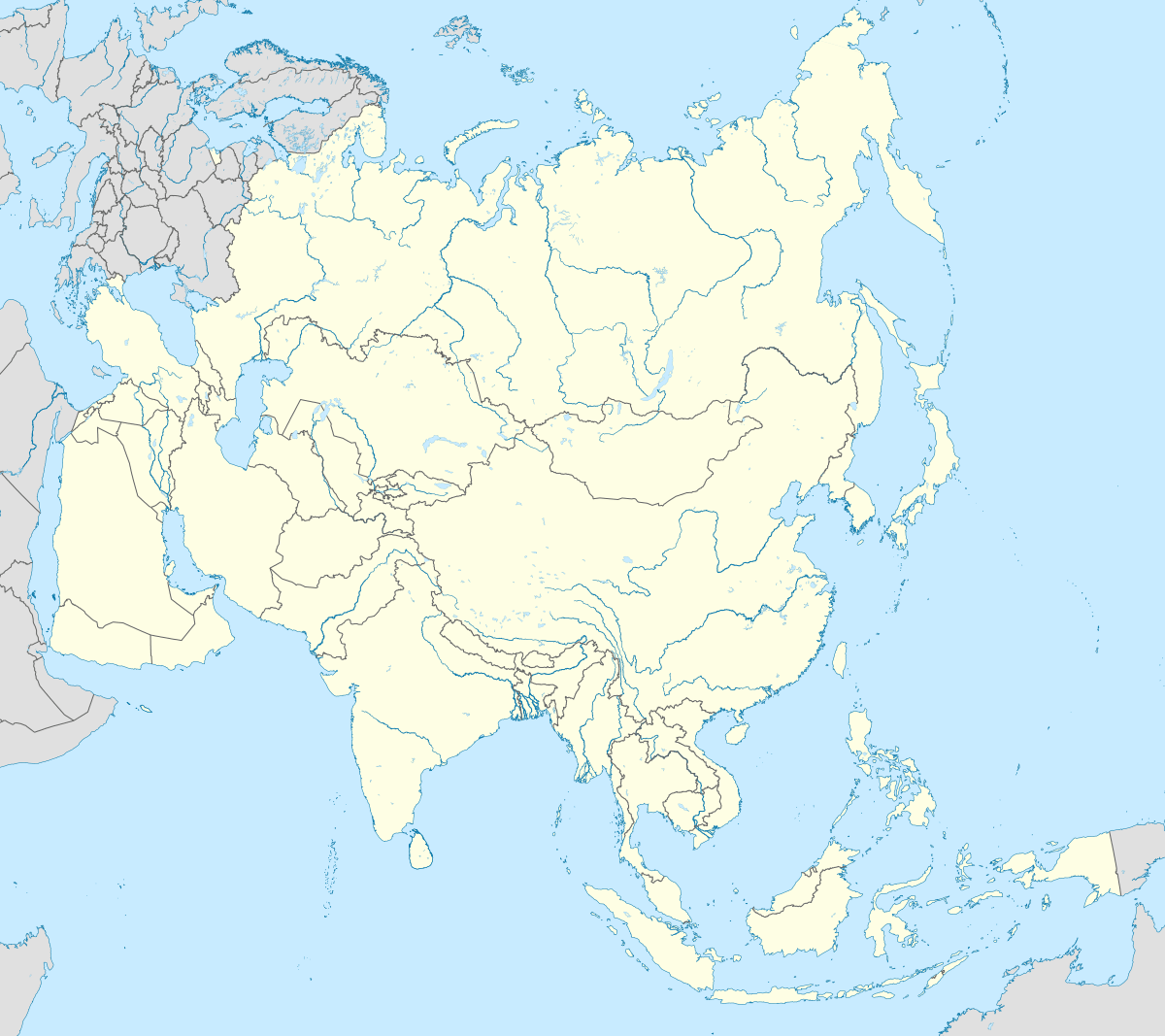
- Bangladesh
- Cambodia
- Japanese School of Phnom Penh - Sen Sok Section,[20] Established in 2015[21]
- Mainland China
- Beijing Japanese School
- Dalian Japanese School
- Guangzhou Japanese School
- Hangzhou Japanese School (杭州日本人学校)
- Qingdao Japanese School (青島日本人学校)
- Shanghai Japanese School
- Shenzhen Japanese School
- Suzhou Japanese School
- Tianjin Japanese School (天津日本人学校)
- Hong Kong
- India
- Indonesia
- Bandung Japanese School
- Jakarta Japanese School
- Surabaya Japanese School (スラバヤ日本人学校)
- Malaysia
- The Japanese School of Kuala Lumpur
- The Japanese School of Johor (ジョホール日本人学校)
- Kota Kinabalu Japanese School (コタキナバル日本人学校)
- Penang Japanese School (ペナン日本人学校)
- Myanmar
- Pakistan
- Philippines
- Manila Japanese School (Taguig City)
- Republic of China (Taiwan)
- Singapore
- South Korea
- Sri Lanka
- Thailand
- Vietnam
Middle East (not including Africa)
- Bahrain
- Egypt
- See Africa
- Iran
- Japanese School in Tehran
- Qatar
- The Japan School of Doha
- Saudi Arabia
- Turkey
- United Arab Emirates
- Japanese School in Abu Dhabi
- Japanese School in Dubai
North America
- Mexico
- Escuela Japonesa de Aguascalientes (アグアスカリエンテス日本人学校) (in Japanese) (Aguascalientes City)
- Liceo Mexicano Japonés Seccion Japonesa (Mexico City)
- United States[note 1]
- The Japanese School of Guam (Mangilao, Guam)
- Chicago Futabakai Japanese School (Arlington Heights, Illinois)
- The New Jersey Japanese School (Oakland, New Jersey)[23]
- The Greenwich Japanese School, the Japanese School of New York (Greenwich, Connecticut)
Central and South America
- Argentina
- Asociación Cultural y Educativa Japonesa (ブエノスアイレス日本人学校, "Japanese School of Buenos Aires")[24]
- Brazil
- Escola Japonesa de Manaus
- Escola Japonesa de São Paulo
- Sociedade Civil de Divulgação Cultural e Educacional Japonesa do Rio de Janeiro
- Chile
- Instituto de Enseñanza Japonesa (サンチャゴ日本人学校) - Lo Barnechea, Santiago Province, Santiago Metropolitan Region[25]
- Colombia
- Asociación Cultural Japonesa (ボゴタ日本人学校; "Japanese School of Bogotá")
- Costa Rica
- Guatemala
- Escuela Japonesa en Guatemala (グァテマラ日本人学校)
- Panama
- Paraguay
- Colegio Japones en Asunción (アスンシオン日本人学校)
- Peru
- Venezuela
- Colegio Japonés de Caracas (カラカス日本人学校) - Sucre Municipality, Miranda[27]
Europe
- Austria
- Belgium
- Czech Republic
- France
- Institut Culturel Franco-Japonais (near Paris)
- Germany
- Japanische International Schule Frankfurt am Main e.V.
- Japanische Internationale Schule in Düsseldorf e.V.
- Japanische Internationale Schule Munich e.V.
- Japanische Internationale Schule zu Berlin e.V.
- Japanische Schule in Hamburg e.V.
- Hungary
- Italy
- Netherlands
- The Japanese School of Amsterdam
- The Japanese School of Rotterdam
- Poland
- Japanese School in Warsaw
- Romania
- Scoala Japoneza Bucuresti
- Russia
- Spain
- Japanese School of Barcelona
- Colegio Japones de Madrid
- Switzerland
- Japanische Schule in Zürich
- Turkey
- See Middle East
- United Kingdom
- Teikyo School United Kingdom
- Rikkyo School in England
- The Japanese School in London
Africa
- Egypt
- Kenya
- The Nairobi Japanese School
- South Africa
- The Japanese School of Johannesburg
Oceania
- Australia
- The Japanese School in Perth
- The Japanese School of Melbourne
- Sydney Japanese School
- Guam (U.S.)
- See North America
Former locations
.svg.png)
Africa:
- Algeria
- Nigeria
- Lagos Japanese School (ラゴス日本人学校) - Designated and certified on March 1, 1975 (Showa 50), revoked March 29, 2002 (Heisei 14)
Asia (excluding Middle East):
- India
- Calcutta Japanese School (カルカタ日本人学校) - Designated on March 30, 1976 (Showa 51), certified on December 18, 1992 (Heisei 4), revoked March 29, 2002 (Heisei 14).
- Indonesia
- Medan Japanese International School or Medan Japanese School (メダン日本人学校, Indonesian: Sekolah Internasional Jepang, Medan)[30]
- It was affiliated with the Japanese Consulate General in Medan, and occupied a 481.88-square-metre (5,186.9 sq ft) building on a 1,880-square-metre (20,200 sq ft) property.[30] It originated as a supplementary school in the consulate's library that opened in April 1972 (Showa 49). A committee to establish a new day school was created in 1978 (Showa 54), and in January 1979 (Showa 55) the school remodeled an existing building for this purpose. The school opened in April 1979.[31] It closed in March 1998.[32]
- Medan Japanese International School or Medan Japanese School (メダン日本人学校, Indonesian: Sekolah Internasional Jepang, Medan)[30]
Middle East (excluding Africa):
- Iraq
- Baghdad Japanese School (バグダッド日本人学校)
- Kuwait
- Kuwait Japanese School (クウエイト日本人学校)
- Lebanon
- Beirut Japanese School (ベイルート日本人学校) - Designated February 10, 1972 (Showa 47), revoked March 29, 2002 (Heisei 14)
- Turkey
Europe:
- Greece
- Japanese Community School of Athens - Closed March 2007[34]
- Spain
- Colegio Japonés de Las Palmas[35] - Opened in October 1973,[36] closed in March 2001,[34]
- Former Yugoslavia
- Belgrade Japanese School (ベオグラード日本人学校)
South America:
- Brazil
- Escola Japonesa de Belém (ベレーン日本人学校) - Designated on February 25, 1977 (Showa 52), Certified on December 18, 1992 (Heisei 4), revoked March 29, 2002 (Heisei 14).
- Escola Japonesa de Belo Horizonte (ベロ・オリゾンテ日本人学校),[37] a.k.a. Instituto Cultural Mokuyoo-Kai Sociedade Civil - Santa Amélia, Paumplha, Belo Horizonte[38] - Designated on February 6, 1982 (Showa 57), Certified on December 18, 1992 (Heisei 4), revoked March 29, 2002 (Heisei 14).
- Escola Japonesa de Vitória (ヴィトリア日本人学校) - Designated February 10, 1981 (Showa 56), Certified December 18, 1992 (Heisei 4), revoked March 29, 2002 (Heisei 14)
- Ecuador
Notes
- There are additional schools which are not classified as nihonjin gakkō by the Ministry of Education, Culture, Sports, Science and Technology; they are instead shiritsu zaigai kyōiku shisetsu (overseas branches of Japanese private schools): Nishiyamato Academy of California and Keio Academy of New York, as well as the defunct schools Seigakuin Atlanta International School and Tennessee Meiji Gakuin - Alos these are day schools neither authorized nor designated by MEXT; therefore they are not nihonjin gakkō nor are they shiritsu zaigai kyōiku shisetsu: Japanese Children's Society (a.k.a. New York Ikuei Gakuen) (in Japanese) (Englewood Cliffs, New Jersey) and Sundai Michigan International Academy (Novi, Michigan)
References
- Ben-Ari, Eyal and John Clammer. Japan in Singapore: Cultural Occurrences and Cultural Flows. Routledge, 4 July 2013. ISBN 1136116184, 9781136116186. page unstated (Google Books PT34). "The biggest Japanese school in the world is in Singapore."
- Hui, Tsu Yun. Japan and Singapore: A Multidisciplinary Approach. McGraw-Hill Education (Asia), 2006. ISBN 0071256237, 9780071256230. p. 278. "The Japanese school in Singapore has become the largest school of its kind outside Japan..."
- "在外教育施設の概要". Archived from the original on 2005-08-24. Retrieved 2006-10-27.
- Mizukami, Tetsuo. The sojourner community [electronic resource]: Japanese migration and residency in Australia (Volume 10 of Social sciences in Asia, v. 10). BRILL, 2007. ISBN 9004154795, 9789004154797. p. 136.
- "(※4)文部科学大臣認定等在外教育施設(高等部を設置するもの)一覧(平成25年4月1日現在)" (Archived February 28, 2015, at the Wayback Machine). Ministry of Education, Culture, Sports, Science and Technology. Retrieved on March 1, 2015.
- Iwasaki, Toshio. "Japanese Schools Take Root Overseas." Journal of Japanese Trade & Industry. Japan Economic Foundation (JEF, Kokusai Keizai Kōryū Zaidan), No. 5, 1991. Contributed to Google Books by the JEF. p. 24. "The number of overseas elementary and junior high schools for Japanese children has increased in postwar years in parallel with the growth of the Japanese economy and the surge in the number of Japanese corporate employees dispatched abroad. However, there was no senior Japanese high school outside Japan until Rikkyo School in England was founded in 1972 in the suburbs of London. It remained the only overseas Japanese senior high school for the next 14 years."
- (in Catalan) Fukuda, Makiko. "El Collegi Japonès de Barcelona: un estudi pilot sobre les ideologies lingüístiques d'una comunitat expatriada a Catalunya" (Archive). Treballs de sociolingüística catalana, 2005: 18 (2004). See profile at Revistes Catalanes amb Accés Obert (RACO). p. 216. "Des que es va establir el col.legi japones de Bangkok l'any 1956, actualment sumen 83 escoles a 50 paisos d' arreu del món." and "El seu currículum escolar segueix el que disposa el Ministeri perque els nens no trobin inconvenients quan tornin al Japó (Goodman, 1993). Amb alguna excepció, la majoria no són oberts als nens no japonesos" and "La llengua vehicular d'instrucció és el japones, i generalment, s'imparteixen les classes de la llengua local, juntament amb les d'angles." and "S'observa una certa tendencia depenent de l'area: en els pa'isos asiatics, o de Proxim i Mig Orient, s'observa una tendencia a triar els col.legis japonesos, mentre que a Europa i als Estats Units la majoria prefereixen enviar els nens a escoles locals."
- Goodman, Roger. "The changing perception and status of kikokushijo." In: Goodman, Roger, Ceri Peach, Ayumi Takenaka, and Paul White (editors). Global Japan: The Experience of Japan's New Immigrant and Overseas Communities. Routledge, June 27, 2005. p. 179. "Official policy (see Monbusho, 1985) was that Nihonjingakko should be set up in developing countries, hoshuko in the developed world."
- "Section 4. Well-Being of Japanese Nationals Overseas" (Archived 2015-03-08 at WebCite). Diplomatic Bluebook 1987 Japan's Diplomatic Activities. Ministry of Foreign Affairs. Retrieved on March 8, 2015.
- "INFORMATION IN ENGLISH." (Archive) Rikkyo School in England. Retrieved on 8 January 2014. "Guildford Road, Rudgwick, W-Sussex RH12 3BE ENGLAND"
- Iwasaki, Toshio. "Japanese Schools Take Root Overseas." Journal of Japanese Trade & Industry. Japan Economic Foundation (JEF, Kokusai Keizai Kōryū Zaidan), No. 5, 1991. Contributed to Google Books by the JEF. p. 25.
- (in Catalan) Fukuda, Makiko. "El Col·legi Japonès de Barcelona: un estudi pilot sobre les ideologies lingüístiques d'una comunitat expatriada a Catalunya" (Archive). Treballs de sociolingüística catalana > 2005: 18 (2004). See profile at Revistes Catalanes amb Accés Obert (RACO). p. 218: "El col·legi Japones de Barcelona, així com els altres col.legis japonesos, realitzen l'ensenyament de la llengua "local" (per a ells aquesta és el castella) i de l'angles a mes del japones. "
- Pang, Ching Lin (彭靜蓮, Pinyin: Péng Jìnglián; Catholic University of Leuven Department of Anthropology). "Controlled internationalization: The case of kikokushijo from Belgium." International Journal of Educational Research. Volume 23, Issue 1, 1995, Pages 45–56. Available online 20 January 2000. DOI 10.1016/0883-0355(95)93534-3. CITED: p. 48. "The curriculum of the Nihonjin Gakko[...]One particular feature, which sets it apart from other “international” American or British schools, is that it has only Japanese pupils and students."
- Fischel, William A. Making the Grade: The Economic Evolution of American School Districts. University of Chicago Press, 15 November 2009. ISBN 0226251314, 9780226251318. p. 132.
- Mizukami, Tetsuo. The sojourner community [electronic resource]: Japanese migration and residency in Australia (Volume 10 of Social sciences in Asia, v. 10). BRILL, 2007. ISBN 9004154795, 9789004154797. p. 139.
- Mizukami, Tetsuo. The sojourner community [electronic resource]: Japanese migration and residency in Australia (Volume 10 of Social sciences in Asia, v. 10). BRILL, 2007. ISBN 9004154795, 9789004154797. p. 138.
- Mizukami, Tetsuo. The sojourner community [electronic resource]: Japanese migration and residency in Australia (Volume 10 of Social sciences in Asia, v. 10). BRILL, 2007. ISBN 9004154795, 9789004154797. p. 138-139.
- Kano, Naomi. "Japanese Community Schools: New Pedagogy for a Changing Population" (Chapter 6). In: García, Ofelia, Zeena Zakharia, and Bahar Otcu (editors). Bilingual Community Education and Multilingualism: Beyond Heritage Languages in a Global City (Volume 89 of Bilingual Education and Bilingualism). Multilingual Matters, 2012. ISBN 184769800X, 9781847698001. START: p. 99. CITED: p. 103.
- 日本人学校及び補習授業校の児童生徒在籍数等 Archived December 20, 2002, at the Wayback Machine
- "Home". Japanese School of Phnom Penh. Retrieved 2020-05-14.
No. 205B, Street Lum, Group 5, Village Toek Thla, Sangkat Toek Thla, Khan Sen Sok, Phnom Penh, Cambodia
- "学校概要". Phnom Penh Japanese School. 2016-03-19. Retrieved 2020-05-14.
- "私立在外教育施設一覧" (Archive). Ministry of Education, Culture, Sports, Science and Technology. Retrieved on March 1, 2015.
- "The New Jersey Japanese School." GreatSchools.
- "Our School." Asociación Cultural y Educativa Japonesa (Argentina). Retrieved on 7 July 2018.
- "学校概要." Instituto de Enseñanza Japonesa (サンチャゴ日本人学校). Retrieved on January 7, 2017. "LA DEHESA 1340, LO BARNECHEA, SANTIAGO, CHILE"
- "学校概要." Escuela Japonesa de San José. Retrieved on 7 July 2018. "学校所在地 Barrio Los Colegios,de Colegio de Farmacéuticos 50mts.al este,Moravia, San José,Costa Rica"
- "学校案内." Colegio Japonés de Caracas. Retrieved on 7 July 2018. "所在地 Carretera Union Comunidad Juan Garcia El Otro Lado al Sur de Hatillo Distrito Sucre Edo.Miranda"
- "過去に指定・認定していた在外教育施設" (Archived 2015-01-14 at WebCite). Ministry of Education, Culture, Sports, Science and Technology. Retrieved on January 15, 2015.
- Kobori, Iwao (Conseiller aupres del'Universite des Nations Unies). "L'Algerie et moi" (Archived 2015-01-16 at WebCite). Japan-Algeria Center. Retrieved on 16 January 2015.
- "学校の概要" (School Outline). Medan Japanese School. May 15, 2001. Retrieved on January 13, 2019. "施設概要 敷地面積 1,880m2 校舎延べ面積 481.88m2"
- "メダン日本人学校の歴史" (History of the Medan Japanese School). Medan Japanese School. April 21, 2001. Retrieved on January 13, 2019. "昭和49年度 4月 補習授業校開 (在メダン総領事館図書館内)"
- Home. Medan Japanese School. April 10, 2001. Retrieved on January 13, 2019. "1998年3月。メダン日本人学校は休校となります。"
- "学校の概要" (Archive). Ankara Japanese School. Retrieved on January 15, 2015. "Horasan Sok.No.6 G.O.P.ANKARA TURKEY"
- "関係機関へのリンク" (Archived 2015-03-31 at WebCite). The Japan School of Doha. Retrieved on March 31, 2015. "アテネ日本人学校(2007年3月休校)" and "ラス・パルマス日本人学校(2001年3月閉校)"
- "欧州の日本人学校一覧" (Archive). MEXT. Retrieved on 6 April 2015. "ラス・パルマス Japanese School of Las Palmas Carretera Del Centro 47, Tafira Alta, Las Palmas de Gran Canaria, Espana "
- Ávila Tàpies, Rosalía (University of Kyoto) and Josefina Domínguez Mujica (Universidad de Las Palmas). "The Canary Islands in the Japanese Imaginary: The Analysis of Three Contemporary Narratives" (Spanish: Canarias en el imaginario japonés: el análisis de tres narrativas contemporáneas; Page archive, PDF archive). Anuario de Estudios Atlánticos ISSN 0570-4065, Las Palmas de Gran Canaria (2011), no. 57, pp. 525-56. Received 26 May 2010. Accepted 30 June 2010. English abstract available. CITATION, p. 528 (PDF 4/38): "El colegio japonés «rasuparumasu nihonjin gakko-» en Tafira Baja, abierto en el año 1973 (octubre) como el tercer colegio japonés más antiguo de Europa y el primero de España, se cerró definitivamente en el 2000 (marzo)."
- Home page Archived 2015-05-07 at the Wayback Machine. Escola Japonesa de Belo Horizonte. Retrieved on January 15, 2015.
- "中南米の日本人学校一覧" (Archive). National Education Center, Japan (国立教育会館). October 3, 1999. Retrieved on February 16, 2015. "Instituto Cultural Mokuyoo-Kai Sociedade Civil Rua das Canarias,2171 Santa Amelia, Belo Horizonte, M.G, Brasil"
- "エクアドル=キト補習授業校が入学式=今年から聴講生増やす" ( Archived 2015-04-02 at WebCite). Nikkey Shimbun. Retrieved on April 2, 2015. "キト日本人学校が03年に閉校し、補習授業校となって以来初めての〃大人数〃だ。" Alternate link Archived 2015-04-02 at the Wayback Machine
Further reading
| Wikimedia Commons has media related to Japanese international schools. |
(in Japanese)
- Nasuno, Mitsuko (那須野 三津子; Department of Children Studies (子ども学部), Tokyo Seitoku University). "Factors in the Government's Decision to Send Teachers of Children With Disabilities to Overseas Japanese Schools: 1979 to 2002" (海外日本人学校に対する障害児教育担当教員派遣の実現要因:―1979~2002年度の教員派遣制度を通して―; Archive" (海外日本人学校に対する障害児教育担当教員派遣の実現要因:―1979~2002年度の教員派遣制度を通して―; Archive). The Japanese Journal of Special Education (特殊教育学研究) 49(3), 247-259, 2011. The Japanese Association of Special Education. See profile at CiNii. See profile at J-Stage (CrossRef). English abstract available.
- Ozawa, Michimasa. (小澤 至賢; 国立特別支援教育総合研究所教育 Department of Educational Support (支援部)). "Situation of Support for Japanese Students with Disabilities in Full-day and Supplementary Schools for the Japanese in the Eastern United States" (アメリカ東部地区の日本人学校及び補習授業校における障害のある日本人児童生徒への支援状況 (<特集>米国における障害のある子どもへの教育的支援の実際; Archive" (アメリカ東部地区の日本人学校及び補習授業校における障害のある日本人児童生徒への支援状況 (<特集>米国における障害のある子どもへの教育的支援の実際; Archive). Special Needs Education of the World (世界の特別支援教育) 23, 43-55, 2009-03. National Institute of Special Needs Education (独立行政法人国立特別支援教育総合研究所). See profile at CiNii. English abstract available.
- 横尾 俊 (国立特別支援教育総合研究所教育相談部). "平成20年度日本人学校及び補習授業校に対するアンケート結果について" (Archive" (Archive). 国立特別支援教育総合研究所教育相談年報 30, 33-45, 2009-06. National Institute of Special Needs Education (独立行政法人国立特別支援教育総合研究所). See profile at CiNii.
- 池﨑 喜美惠. "Actual Conditions of Consumer Education at Japanese Schools in Foreign Countries" (日本人学校における消費者教育の実態). The Bulletin of Japanese Curriculum Research and Development (日本教科教育学会誌). 37(3), 33-40, 2014. 日本教科教育学会. See profile at CiNii.
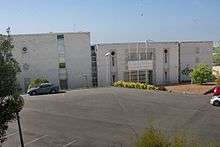
.jpg)

